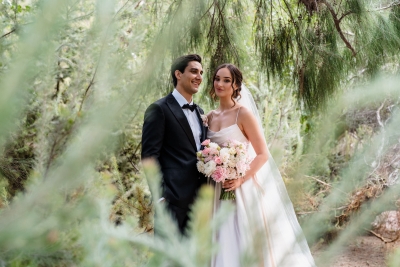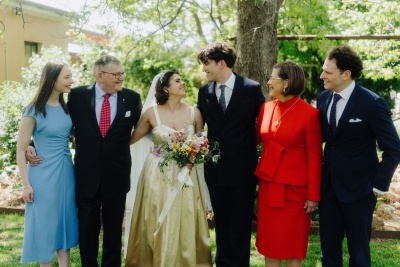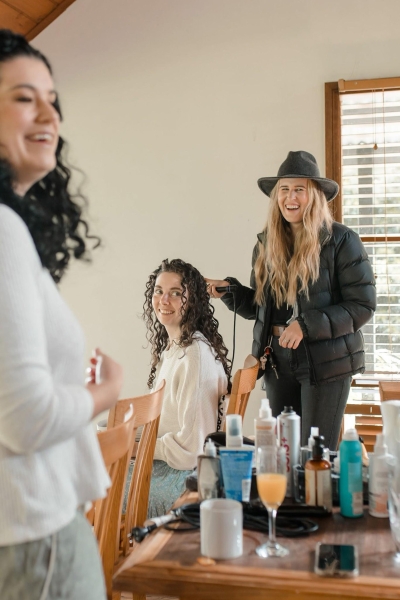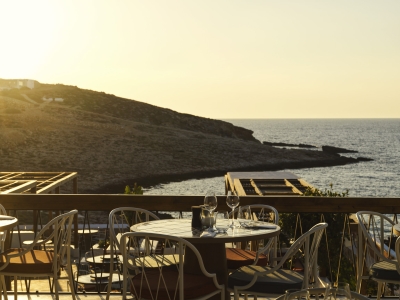There are many different types of introverts, and I fit into the sensitive closet type. In essence, I have a proclivity toward feeling and thinking that resulted in a tendency to process things on a deeper level. Every wedding I go to, feeling the deep connection of a couple, having connected conversations with people are much more important to me than the decorations of a wedding. Hence from early on, I wanted an intimated small wedding with only a few close family and friends.
My partner is an introvert too. However, his proclivity is toward tradition, order and structure. Hence, he wanted a traditional wedding with a big group of family and friends to witness the next stage of his life.
After we decided to have the big wedding my partner dreamed of since he was a kid, I set out to look for tools to create a comfortable ambience and avoid being overwhelmed on my wedding day. Here are some tips I used that might be helpful.
Set the intention, and develop a clear vision of the emotional state you want to be in on your wedding day
After hearing many stories about wedding couples getting hung up on small things, I decided to employ the Japanese Wabi-Sabi philosophy (accepting your imperfections and making the most of life) when it comes to wedding planning. It kept me holding a healthy perspective before, during and after the wedding!
Seek help and inspirations
Being so different in our wedding visions, my partner and I couldn’t agree on the basic wedding format for over a year! The issue was we were focused on the wedding format over our feelings and attachments towards weddings. Luckily, we have friends who were able to act as councillors to help us reframe our mindset.
Priya Parker’s book, The Art of Gathering: Create Transformative Meetings, Events and Experiences, was another great tool that reframed my view towards the big gathering. The book provided a few examples and tools that could jazz up human-centric connections even in big crowds.
Write down your wishes and feelings
On top of Pinterest wedding day mood board, I used a journal to record how I want to feel on my wedding day – being grateful and feeling blessed. The exercise became a positive energy deposit and built up the feeling on the day. I was able to bounce back to gratitude and blessings very quickly, despite a few unwelcome surprises from some guests!
Pick decorations that have meaning to you and create a comfortable environment from it
For example, I love the style and philosophy of ikebana (the Japanese art of flower arrangement). Despite it not being a traditional wedding flower choice and I couldn’t find any florist who advertised their ikebana skill, I contacted NSW Ikebana Association to seek help. Luckily they introduced me to a wonderful ikebana artist with lots of wedding flower experience. The meaning and connection with the wedding flower meant I was able to externalise my inner connection to the outer experience of the wedding.
Protect, equalise, and connect
Priya Parker introduced the key to a successful human-centric gathering with the idea that the host creates an environment that protects, equalises and connects his/her guests.
We wanted to create a worry-free environment for our guest to let their hair down. Based on Pyria’s concept, we protected our guest by not inviting children under 12 (except my partner’s two nephews) to allow our friends and family to be themselves over being a carer of a child.
We also planned our logistics based on guest comfort. For example, the ceremony location was a five minute drive to the reception to minimise guest travel, and all formalities were finished by 9pm to cater to my early-bird guests, so they could leave whenever they wanted to afterwards.
We also made sure every guest had more than one person they knew at the wedding. Not only did that equalise and connect our guests, it also meant we didn’t feel obligated to entertain 150 people personally!
Have a small bridal party you trust
So planning a wedding and getting ready together doesn’t feel so hectic!
Create an energy surplus time slot
Asian weddings usually starts at 5am with jam-packed activities. I insisted on a three hour break for a ‘lunch nap’ instead of long photos shoots in the afternoon like most Asian weddings. At the end, I was only able to nap in the car for around 10 minutes. But it was enough for me to stay up for the after party! Also, the quiet time with just my maid-of-honour to debrief the first half of the wedding day was valuable to help me re-centre myself and regain my energy. I was able to show up much more thoroughly for everyone in my life!
Share your vision and fear with the team and lean on them
My vendors and bridal party were my team. They were my most prominent advocates. In fact, many provided valuable recommendations. My vendors were professional, flexible and able to sort all the small hiccups on the day without worrying me. Also, my day coordinator Leisa from Windwood Events was a blessing! She was the best investment for my wedding planning process.
Carry an emotional anchor or create a trigger to your desired feeling
Another tool that elicits a desired feeling is having an emotional anchor that you can carry with you to calm your nerves. Some people use a gesture such as thumbs up, hold a crystal, or use essential oils and perfume. I connect my feelings and presence with what I wear. When I feel overwhelmed, I looked at my dress. The beautiful and romantic tulles would trigger the romantic and beautiful emotion I experienced when I first saw the dress.
Bonus tip: how to connect with a large amount of guests
With all the efforts I placed on the wedding, it was fun, memorable and had lots of positive feedback. Yet, I feel I didn’t get to connect much with my guests and it seems to be a shared experience most couples feel if they have a bigger weddings.
After more inner soul searching and research, the ’15 toasts’ idea from Priya Parker might offer a solution. The premise of this is to gather 15 people and ask them to each share a story around a common theme. And each story should end with a toast.
My suggestion is to request all your guest to bring a story based on a theme. You can set the topic and mention it on your wedding invitations. At the beginning of the reception, ask all guests to share their story with people on their reception table, then each table should nominate a person to give a toast to the wedding couple based on the shared stories of the table.
The trick to this, Pryia says, is to create a space where attendees feel safe enough to share stories that aren’t all positive and light.
All the best to the introvert brides and grooms out there!
Ms Floral Says: Thank you for sharing these incredibly thoughtful and helpful tips. They are sure to bring peace of mind to brides and grooms who are having similar feelings in the lead up to their weddings.






















Join the conversation